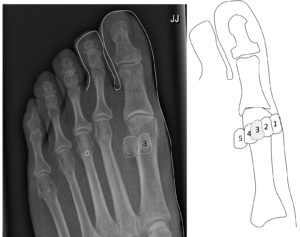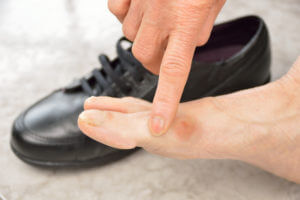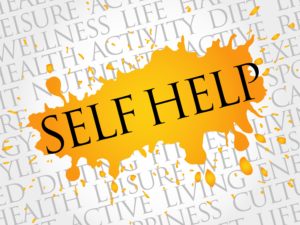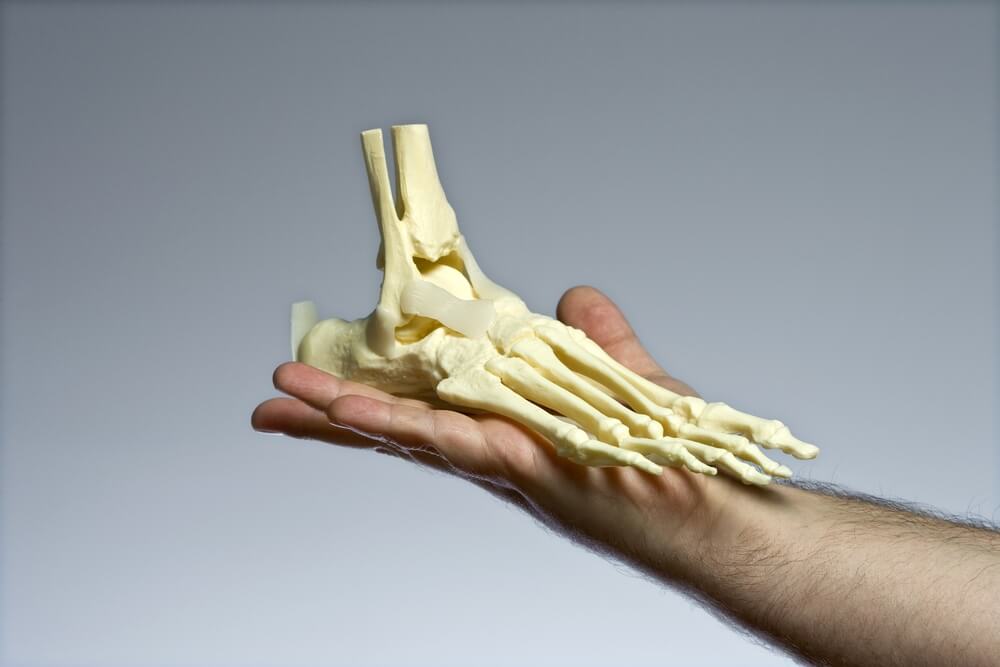The sesamoid bone
The subject of this article is a bone. The part of the foot under the big toe is called the sesamoid bone. I will discuss the bone, its function and a condition called sesamoiditis which involves the sesamoid within the joint. At the end I will offer a few ideas about self-help and what patients can do to alleviate pain..
What is a sesamoid bone?

X-ray of common sesamoids in the great toe. (C) Author 2020
This seed like bone was considered a religious artefact to be buried with a person if history was accurate, but wasn’t not. The sesamoid bone is good for a story but most people do not know that these extra bones take us from 26 to 28 in number if we count the skeleton
The Patella. It is formed around joints other than feet. The best example is the knee cap or patella which just happens to be the largest in the human body. So what does the sesamoid bone do? All sesamoids help to stabilise joints and add extra mechanical efficiency to the tendons. In this article I shall only mention the big toe which as a rule has 2 sesamoids which appear on x-ray around 10 years of age.

Author (C) 2020
In the picture you can see two encircled bones marked by the number (3). The illustration next to the x-ray helps identify the position.
Stiff toe or Hallux Limitus
When movement is lost in a big toe joint this limited movement is called hallux (great toe) limitus. The diagram shows a rigid toe with a bone bump over the top.

hallux limitus/Shutterstock
The toe may improve on its own, or it may remain stiff. An injection of steroid or anaesthetic can help us diagnosis whether the condition is related to localised inflammation. If it is, that’s good news. James Le Fanu (Daily Telegraph June 2020) wrote about this condition within his column but it was hidden with another condition called fasciitis.
Soft tissue changes
The sesamoid bone is hard but it is surrounded by tendons and ligaments. These make up the soft tissues. In illustration I have drawn out the structure showing the main inflamed area. You can liken the red areas where the sesamoid bone may grind against the uppermost soft cartilage.

schematic sesamoid in first toe joint. Author (C) 2020
The sesamoid is shown in blue and a muscle in orange is shown. The bone sits within the short muscle. Each sesamoid bone has its own tendon. These bones can jam and cause spasm (sesamoiditis). Spasm means shortening and this is often seen when we experience cramp. Some muscles remain in spasm and because the sesamoid is embedded any tightening stops it from moving smoothly.
Sesamoiditis
This condition can arise from many causes and arise at any adult age. When a patient seeks advice is is important to determine if the joint is held rigid because of sesamoiditis and tendon / muscle spasm. Or alternatively to decide whether the stiffness is due to arthrosis / arthritis.Fractures of these sesamoid bones are rare. An ordinary x-ray may not hold the clue alone. Usually, sesamoiditis is acute or chronic. Acute pain comes on suddenly and reaches a heightened level. If it creeps up gradually and remains at a level like a wave which goes up and down, it is more likely to be chronic. The symptoms create a constant aching pain and can even appear as toothache-like. Grossly red, very tense burning pain is likely to be something else, including fracture. Gout is rare and over diagnosed by most doctors. It is important for us to rule out degenerative changes within the joint and that means arthritis.
Causes of sesamoiditis
The most common reason for sesamoiditis is associated with local inflammation. This might be associated with playing tennis, squash or other hard impact sports where we come down heavily on our foot. Multiple sharp twists or even high heeled footwear can create pain problems in the big toe. The soft tissue and joint lining can be damaged. Soft tissue irritation is by far the more common likelihood and can affect all age groups.
What do we do for sesamoid pain?
- Rest, using stiff soled shoes and reducing our physical activities are all first-line treatments.
- Local splinting is useful to stop the big toe moving and special insoles can help to protect the sesamoid and joint.
- Injections form the second line of treatment and these have to be carefully placed. Foot specialists might use x-ray or ultrasound guidance to guide the injection.
- If the surface loses its smoothness and cracks or dries out the lubrication will be lost and movement compromised. Injections in this case may be short-lived in their effectiveness.
- Removal of sesamoids are occasionally used but not as frequently as one might expect. Other types of surgery will depend on the results of a detailed examination.
- Sesamoid pain can be helped by padded dressing using felt. Click for an information sheet to deal with sesamoids.

If you have a stiff and painful first toe joint check out my self help video here. Use a stiff soled shoe and try taping the toe in the manner shown in my video. If the pain does not settle always seek professional advice and chipped cartilage can make matters worse if this is not dealt with.
Thanks for reading ‘The sesamoid bone’ by David R Tollafield

Recent Comments